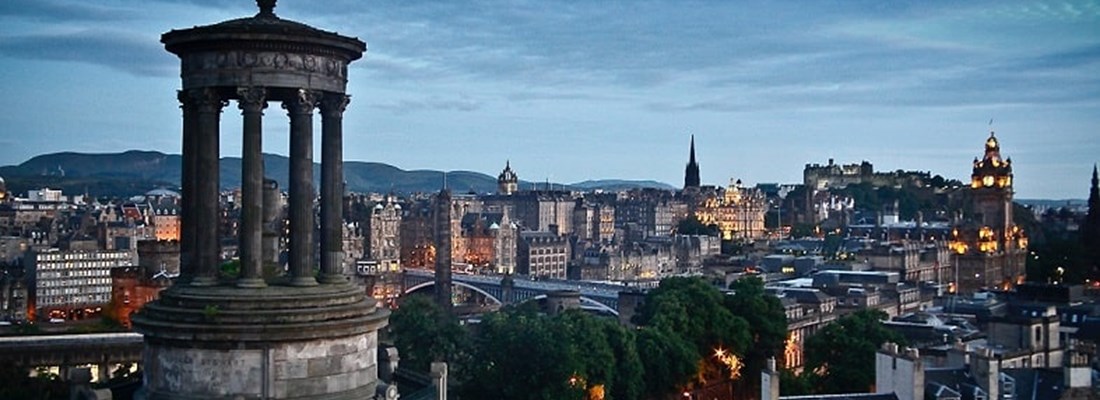Scottish Budget 2022

Spending
Announced in the Budget was almost £2 billion of low-carbon capital investment in infrastructure, as Scotland looks to ‘play its part in tackling the global climate emergency head on’.
This includes the first £20m of the 10-year Just Transition Fund, to help the northeast and Moray transition from carbon-based industries. A total of £336 million was allocated to decarbonise the heating of one million homes, and the equivalent of 50,000 non-domestic buildings, by 2030. In addition, £1.4 billion will be spent to ‘maintain, improve and decarbonise’ Scotland's rail network.
Non-Domestic Rates Relief
The Scottish Budget announced the phased return of non-domestic rate liabilities, which had been subject to 100% relief due to the pandemic. Non-domestic rates will be 49.8p in the pound, however, rate relief for the retail, hospitality and leisure sectors will continue at 50% for the first three months of 2022, capped at £27,500 per ratepayer.
Small businesses with a rateable value of less than £15,000 on Scottish high streets, will continue to pay no rates for all of next year, irrespective of which sector they are in, through the Small Business Bonus Scheme. Additionally, new builds will pay no rates for the first 12 months after occupation, through the Business Growth Accelerator.
Scottish income tax
The Scottish Budget announced the Starter and Basic Rate bands of income tax (other than those for savings and dividend income) which apply to Scottish resident taxpayers will increase by inflation, the Higher and Top Rate thresholds will remain frozen.
The current rates and bands for 2021/22 and the proposed rates and bands for 2022/23 on non-savings and non-dividend income are as follows:
|
Scottish Bands 2022/23 |
Scottish Bands 2021/22 |
Band name |
Scottish Rates |
|
£12,570* - £14,732 |
£12,570* - £14,667 |
Starter |
19% |
|
£14,733 - £25,688 |
£14,668 - £25,296 |
Scottish Basic |
20% |
|
£25,689 - £43,662 |
£25,297 - £43,662 |
Intermediate |
21% |
|
£43,663 - £150,000** |
£43,663 - £150,000** |
Higher |
41% |
|
Above £150,000** |
Above £150,000** |
Top |
46% |
* Assumes individuals are in receipt of the Standard UK Personal Allowance.
** The personal allowance will be reduced if an individual’s adjusted net income is above £100,000. The allowance is reduced by £1 for every £2 of income over £100,000.
The Personal Allowance is £12,570 for 2021/22. The Chancellor announced in the March 2021 Budget that the personal allowance will be frozen at £12,570 for the tax years 2022/23 to 2025/26.
Land and Buildings Transaction Tax
The Scottish Government’s stated policy priority for residential Land and Buildings Transaction Tax (LBTT) is to maintain residential rates and bands at their current level to deliver certainty and stability for taxpayers.
The current rates and bands are as follows:
|
Residential property |
Rate |
|
£0 - £145,000 |
0% |
|
£145,001 - £250,000 |
2% |
|
£250,001 - £325,000 |
5% |
|
£325,001 - £750,000 |
10% |
|
£750,001 and over |
12% |
The rates apply to the portion of the total value which falls within each band.
First-time buyer relief
The relief for first-time buyers of properties up to £175,000 will remain with its effect of increasing the residential zero tax threshold for first-time buyers from £145,000 to £175,000. First-time buyers purchasing a property above £175,000 also benefit from the relief on the portion of the price below the threshold.
According to the Government, those buying a property for more than £175,000 will receive relief on the portion of the price below the threshold and benefit from savings of up to £600.
Higher rates for additional residential properties
Higher rates of LBTT are charged on purchases of additional residential properties, such as buy to let properties and second homes. Although these are the main targets of the higher rates, some other purchasers may have to pay the higher rates.
The Additional Dwelling Supplement (ADS) potentially applies if, at the end of the day of the purchase transaction, the individual owns two or more residential properties. Care is needed if an individual already owns, or partly owns, a property and transacts to purchase another property without having disposed of the first property. The ADS is charged at 4%.
Following the commitment in the Programme for Government 2021-22 the Scottish Government will launch a call for evidence and views on the operation of the ADS.
Non-residential conveyances and leases
The rates and bands for non-residential LBTT transactions are to remain unchanged, as follows:
|
Non-residential transactions |
Rate |
Non-residential leases |
Rate |
|
Up to £150,000 |
0% |
Up to £150,000 |
0% |
|
£150,001 to £250,000 |
1% |
£150,001 to £2 million |
1% |
|
Over £250,000 |
5% |
Over £2 million |
2% |




